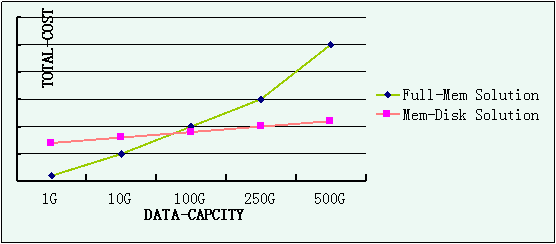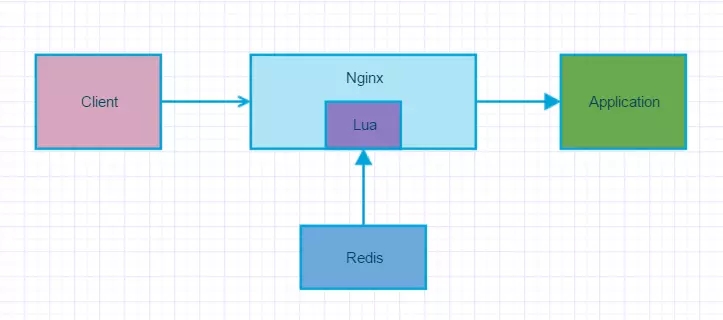前言
在Redis中的LRU算法文中说到,LRU有一个缺陷,在如下情况下:
~~~~~A~~~~~A~~~~~A~~~~A~~~~~A~~~~~A~~|
~~B~~B~~B~~B~~B~~B~~B~~B~~B~~B~~B~~B~|
~~~~~~~~~~C~~~~~~~~~C~~~~~~~~~C~~~~~~|
~~~~~D~~~~~~~~~~D~~~~~~~~~D~~~~~~~~~D|
会将数据D误认为将来最有可能被访问到的数据。
Redis作者曾想改进LRU算法,但发现Redis的LRU算法受制于随机采样数maxmemory_samples,在maxmemory_samples等于10的情况下已经很接近于理想的LRU算法性能,也就是说,LRU算法本身已经很难再进一步了。
于是,将思路回到原点,淘汰算法的本意是保留那些将来最有可能被再次访问的数据,而LRU算法只是预测最近被访问的数据将来最有可能被访问到。我们可以转变思路,采用一种LFU(Least Frequently Used)算法,也就是最频繁被访问的数据将来最有可能被访问到。在上面的情况中,根据访问频繁情况,可以确定保留优先级:B>A>C=D。
Redis中的LFU思路
在LFU算法中,可以为每个key维护一个计数器。每次key被访问的时候,计数器增大。计数器越大,可以约等于访问越频繁。
上述简单算法存在两个问题:
- 在LRU算法中可以维护一个双向链表,然后简单的把被访问的节点移至链表开头,但在LFU中是不可行的,节点要严格按照计数器进行排序,新增节点或者更新节点位置时,时间复杂度可能达到O(N)。
- 只是简单的增加计数器的方法并不完美。访问模式是会频繁变化的,一段时间内频繁访问的key一段时间之后可能会很少被访问到,只增加计数器并不能体现这种趋势。
第一个问题很好解决,可以借鉴LRU实现的经验,维护一个待淘汰key的pool。第二个问题的解决办法是,记录key最后一个被访问的时间,然后随着时间推移,降低计数器。
Redis对象的结构如下:
typedef struct redisObject {
unsigned type:4;
unsigned encoding:4;
unsigned lru:LRU_BITS; /* LRU time (relative to global lru_clock) or
* LFU data (least significant 8 bits frequency
* and most significant 16 bits access time). */
int refcount;
void *ptr;
} robj;
在LRU算法中,24 bits的lru是用来记录LRU time的,在LFU中也可以使用这个字段,不过是分成16 bits与8 bits使用:
16 bits 8 bits +----------------+--------+ + Last decr time | LOG_C | +----------------+--------+
高16 bits用来记录最近一次计数器降低的时间ldt,单位是分钟,低8 bits记录计数器数值counter。
LFU配置
Redis4.0之后为maxmemory_policy淘汰策略添加了两个LFU模式:
- volatile-lfu:对有过期时间的key采用LFU淘汰算法
- allkeys-lfu:对全部key采用LFU淘汰算法
还有2个配置可以调整LFU算法:
lfu-log-factor 10 lfu-decay-time 1
lfu-log-factor可以调整计数器counter的增长速度,lfu-log-factor越大,counter增长的越慢。
lfu-decay-time是一个以分钟为单位的数值,可以调整counter的减少速度
源码实现
在lookupKey中:
robj *lookupKey(redisDb *db, robj *key, int flags) {
dictEntry *de = dictFind(db->dict,key->ptr);
if (de) {
robj *val = dictGetVal(de);
/* Update the access time for the ageing algorithm.
* Don't do it if we have a saving child, as this will trigger
* a copy on write madness. */
if (server.rdb_child_pid == -1 &&
server.aof_child_pid == -1 &&
!(flags & LOOKUP_NOTOUCH))
{
if (server.maxmemory_policy & MAXMEMORY_FLAG_LFU) {
updateLFU(val);
} else {
val->lru = LRU_CLOCK();
}
}
return val;
} else {
return NULL;
}
}
当采用LFU策略时,updateLFU更新lru:
/* Update LFU when an object is accessed.
* Firstly, decrement the counter if the decrement time is reached.
* Then logarithmically increment the counter, and update the access time. */
void updateLFU(robj *val) {
unsigned long counter = LFUDecrAndReturn(val);
counter = LFULogIncr(counter);
val->lru = (LFUGetTimeInMinutes()<<8) | counter;
}
降低LFUDecrAndReturn
首先,LFUDecrAndReturn对counter进行减少操作:
/* If the object decrement time is reached decrement the LFU counter but
* do not update LFU fields of the object, we update the access time
* and counter in an explicit way when the object is really accessed.
* And we will times halve the counter according to the times of
* elapsed time than server.lfu_decay_time.
* Return the object frequency counter.
*
* This function is used in order to scan the dataset for the best object
* to fit: as we check for the candidate, we incrementally decrement the
* counter of the scanned objects if needed. */
unsigned long LFUDecrAndReturn(robj *o) {
unsigned long ldt = o->lru >> 8;
unsigned long counter = o->lru & 255;
unsigned long num_periods = server.lfu_decay_time ? LFUTimeElapsed(ldt) / server.lfu_decay_time : 0;
if (num_periods)
counter = (num_periods > counter) ? 0 : counter - num_periods;
return counter;
}
函数首先取得高16 bits的最近降低时间ldt与低8 bits的计数器counter,然后根据配置的lfu_decay_time计算应该降低多少。
LFUTimeElapsed用来计算当前时间与ldt的差值:
/* Return the current time in minutes, just taking the least significant
* 16 bits. The returned time is suitable to be stored as LDT (last decrement
* time) for the LFU implementation. */
unsigned long LFUGetTimeInMinutes(void) {
return (server.unixtime/60) & 65535;
}
/* Given an object last access time, compute the minimum number of minutes
* that elapsed since the last access. Handle overflow (ldt greater than
* the current 16 bits minutes time) considering the time as wrapping
* exactly once. */
unsigned long LFUTimeElapsed(unsigned long ldt) {
unsigned long now = LFUGetTimeInMinutes();
if (now >= ldt) return now-ldt;
return 65535-ldt+now;
}
具体是当前时间转化成分钟数后取低16 bits,然后计算与ldt的差值now-ldt。当ldt > now时,默认为过了一个周期(16 bits,最大65535),取值65535-ldt+now。
然后用差值与配置lfu_decay_time相除,LFUTimeElapsed(ldt) / server.lfu_decay_time,已过去n个lfu_decay_time,则将counter减少n,counter - num_periods。
增长LFULogIncr
增长函数LFULogIncr如下:
/* Logarithmically increment a counter. The greater is the current counter value
* the less likely is that it gets really implemented. Saturate it at 255. */
uint8_t LFULogIncr(uint8_t counter) {
if (counter == 255) return 255;
double r = (double)rand()/RAND_MAX;
double baseval = counter - LFU_INIT_VAL;
if (baseval < 0) baseval = 0;
double p = 1.0/(baseval*server.lfu_log_factor+1);
if (r < p) counter++;
return counter;
}
counter并不是简单的访问一次就+1,而是采用了一个0-1之间的p因子控制增长。counter最大值为255。取一个0-1之间的随机数r与p比较,当r
+--------+------------+------------+------------+------------+------------+
| factor | 100 hits | 1000 hits | 100K hits | 1M hits | 10M hits |
+--------+------------+------------+------------+------------+------------+
| 0 | 104 | 255 | 255 | 255 | 255 |
+--------+------------+------------+------------+------------+------------+
| 1 | 18 | 49 | 255 | 255 | 255 |
+--------+------------+------------+------------+------------+------------+
| 10 | 10 | 18 | 142 | 255 | 255 |
+--------+------------+------------+------------+------------+------------+
| 100 | 8 | 11 | 49 | 143 | 255 |
+--------+------------+------------+------------+------------+------------+
可见counter增长与访问次数呈现对数增长的趋势,随着访问次数越来越大,counter增长的越来越慢。
新生key策略
另外一个问题是,当创建新对象的时候,对象的counter如果为0,很容易就会被淘汰掉,还需要为新生key设置一个初始counter,createObject:
robj *createObject(int type, void *ptr) {
robj *o = zmalloc(sizeof(*o));
o->type = type;
o->encoding = OBJ_ENCODING_RAW;
o->ptr = ptr;
o->refcount = 1;
/* Set the LRU to the current lruclock (minutes resolution), or
* alternatively the LFU counter. */
if (server.maxmemory_policy & MAXMEMORY_FLAG_LFU) {
o->lru = (LFUGetTimeInMinutes()<<8) | LFU_INIT_VAL;
} else {
o->lru = LRU_CLOCK();
}
return o;
}
counter会被初始化为LFU_INIT_VAL,默认5。
pool
pool算法就与LRU算法一致了:
if (server.maxmemory_policy & (MAXMEMORY_FLAG_LRU|MAXMEMORY_FLAG_LFU) ||
server.maxmemory_policy == MAXMEMORY_VOLATILE_TTL)
计算idle时有所不同:
} else if (server.maxmemory_policy & MAXMEMORY_FLAG_LFU) {
/* When we use an LRU policy, we sort the keys by idle time
* so that we expire keys starting from greater idle time.
* However when the policy is an LFU one, we have a frequency
* estimation, and we want to evict keys with lower frequency
* first. So inside the pool we put objects using the inverted
* frequency subtracting the actual frequency to the maximum
* frequency of 255. */
idle = 255-LFUDecrAndReturn(o);
使用了255-LFUDecrAndReturn(o)当做排序的依据。
参考链接
总结
以上就是这篇文章的全部内容了,希望本文的内容对大家的学习或者工作具有一定的参考学习价值,谢谢大家对潘少俊衡的支持。
版权声明
本文仅代表作者观点,不代表本站立场。
本文系作者授权发表,未经许可,不得转载。
本文地址:/shujuku/Redis/103312.html














